It's easy for a retailer to feel overwhelmed by the number of distribution modes available. Between buzzwords like direct-to-consumer, single-channel, multi-channel, dropshipping, and more, it can be difficult to know which mix of distribution channels is the best strategy for your business. However, one thing is clear: omnichannel distribution is the way of the future.
Picture this: a busy professional living in a bustling city decides to purchase a new pair of shoes online. However, a last minute meeting, an unexpected errand, or a phone call causes them to leave their premises. The parcel is returned, causing not only frustration for both the consumer and the retailer, but a serious financial drain for the seller.
While this scenario is all too familiar in the world of retail, it doesn't have to be. What if a customer could reroute a package to where they were headed? Or, chose to pick it up in store after purchasing it online?
With omnichannel distribution, retailers work with a variety of flexible distribution “channels” that give the customer more control over their shopping experience.
A quick look at logistics as it exists today
Logistics has always been an expensive part of a supply chain. A company's distribution effort adds anywhere from 5–15% to a product's final price — a range that's stubbornly refused to budge over the years. The reason is an old one. Distribution, like many legacy industries, didn't adopt modern digitization and cloud-based technologies that reduced costs greatly. It remains fragmented across industries and lacks standardization that creates efficiencies more in-tune with the present times. The result was an overly complex system devoid of transparency that gave retailers little to no control over pricing their item-transits.
Why might this be the case? After all, hasn’t digitization proven itself in virtually every industry? Unfortunately, the complexity of logistics systems means that any change will always be incremental while inviting immense inertia from incumbents. That’s not to say that managers aren’t aware of how modern digitization can revolutionize their operations. There are just too many variables at play.
For example, McKinsey, in their report on 80 North American distributors, found that many had legitimate concerns about upgrading. Reasons cited included: cost of upgrade, vague ROI projections, and uncertainty on interoperability with legacy systems. Around 14% continue to use spreadsheets to manage their day-to-day affairs. Half also didn’t have any Advanced Planning Systems (APS), Warehouse Management Systems (WMS), or Transportation Management Systems (TMS) in place. Furthermore, 50% of the respondents had no warehouse robotics, or any plans to adopt them.
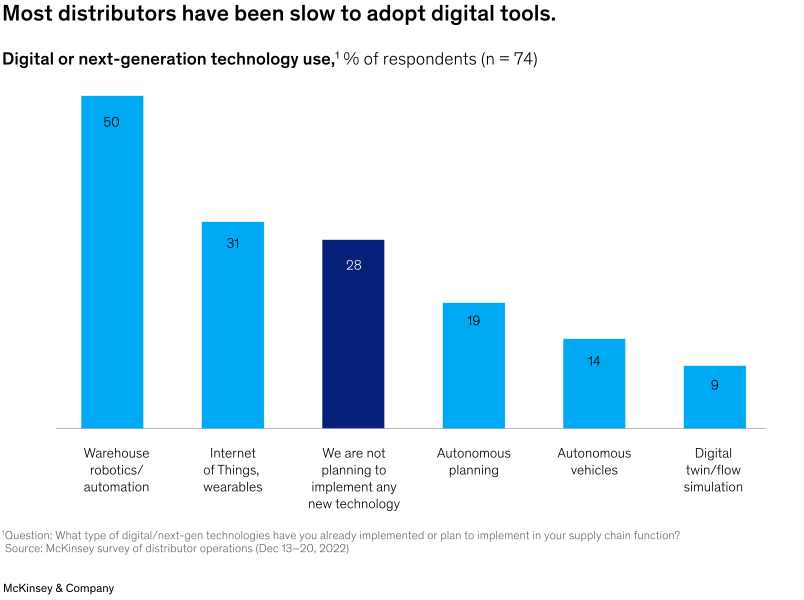
We can't blame distribution services squarely, though. Their state is a product of specific circumstances that have provided little incentive to innovate. Evolutionary pressure of the sort that inspires positive change has only gathered enough momentum recently. Amazon's aggressive delivery methods followed by the COVID-19 pandemic have forced retailers to sit-up and take note.
Legacy technologies and systems mentioned above are simply too slow to respond to the pace at which business now happens. Modern consumers demand same-day delivery, fluid last mile logistics, and the freedom to pick up their package anywhere. Such requirements are a sizable challenge for old, rigid distribution methods.
Thankfully, cloud-based Software-as-a-Service solutions such as DeliverySolutions are providing a better way out for distributors through their pay-as-you-go and powerful integration capabilities. Over the past few years, several omnichannel distribution methods have emerged to answer the call. These strategies actively leverage both new and old technologies, empowering distributors to effectively respond to modern requirements.
What is omnichannel distribution
The word omni means "all" and implies present everywhere. In the context of logistics, omnichannel means all distribution mediums available for most if not every fulfillment requirement. But, what exactly makes omnichannel new? After all, doesn't multichannel distribution do the exact same thing? The two are indeed related, but work very differently. Here’s a diagram comparing the two:
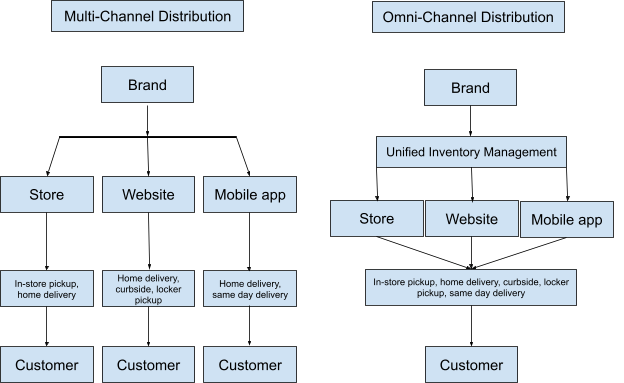
In a multi-channel approach, businesses have separate strategies and buyer personas for each channel, catering to different customer preferences. So, if the brick-and-mortar store that used in-store pickup starts home delivery, it’s considered an addition to the store channel. If the e-commerce part of the business is using curbside delivery, it won’t necessarily be available to the physical store, too.
However, omnichannel strategies emphasize on creating a seamless and interconnected experience where all channels work together to serve the customer's needs. In an omnichannel strategy, all distribution channels are working together. So, in the example above, the store can add curbside delivery, locker pickup if it appears necessary.
Even though omnichannel distribution is a relatively new idea, it's already proving itself in the field. Nearly 90% of customers now expect brands to offer an omnichannel experience across physical and digital platforms. It’s proving effective too. Adobe found that 20% of shoppers would purchase more from brands that offered BOPIS, or other omnichannel fulfillment.
For example, Lowes Foods revolutionized the retail grocery market with its game-changing omnichannel approach. Partnering with DeliverySolutions, they optimized their guests’ entire digital experience, from checkout to home delivery. We helped orchestrate their Same Day Delivery providers, and provided them with a white-labeled live-tracking page so users can view where their order is in real time. Lowes Foods recognized the growing demand for online grocery shopping and sought a multi-provider orchestration platform to optimize brand exposure, economics, and delivery coverage while retaining control over the overall customer experience. In fact, they pioneered the space for grocery — their first iteration of online shopping was in the late 90s.
By integrating DeliverySolutions with their existing technology, Lowes Foods provides same-day delivery while optimizing provider selection. They pioneered innovative strategies like pooled distribution, lockers in senior communities, and specialized providers for alcohol and cold chain delivery. With an intelligent orchestration engine, Lowes Foods meets delivery promises, maintains digital control, and delivers a branded experience. Scalability is effortless, without heavy coding or custom development.
5 types of omnichannel distribution strategies you should consider investing in
There's no one perfect way to implement omnichannel distribution, and every company will have to find their own way to make it work for them. This is particularly true because omnichannel requires rigorous integration of different organizational structures and each brand has its own distribution requirements as well as challenges. Not to mention, buyers in different markets have their own necessities that mandate technological implementations and strategic approaches.
Broadly speaking, we can classify omnichannel distribution methods into five types.
Buy Online, Pickup Anywhere (BOPA)
BOPA is by far the most flexible omnichannel retail strategy that's quickly gaining traction today. BOPA allows customers to purchase products online and pick them up at a location of their choice, like a physical store, partner location, or a designated pickup point.
The ability to pickup a package anywhere offers several advantages. Customers can choose a location that's either best suited to them, or most cost-effective. As per a study, 50% of shoppers who were offered BOPA did so because it was cheaper, while 15% chose it because of better security.
BOPA works out cheaper than other delivery methods as around 90% of shoppers in America live within 5 miles of a delivery location. Of them, those who have used BOPA are typically within one mile of a pickup point.
Buy Online, Pickup in Store (BOPIS)
While BOPIS has been around for a while, it really picked up steam during the COVID pandemic. With BOPIS, customers can place their orders online, then collect it from a nearby store when they’re ready. The option works out cheaper and faster for both the retailer and customer as it capitalizes on store proximity. Retailers can leverage e-commerce platforms without needing to invest in costly shipping. Consumers can pick their orders up when they are in transit, between home or work, or when they're heading out to an event.
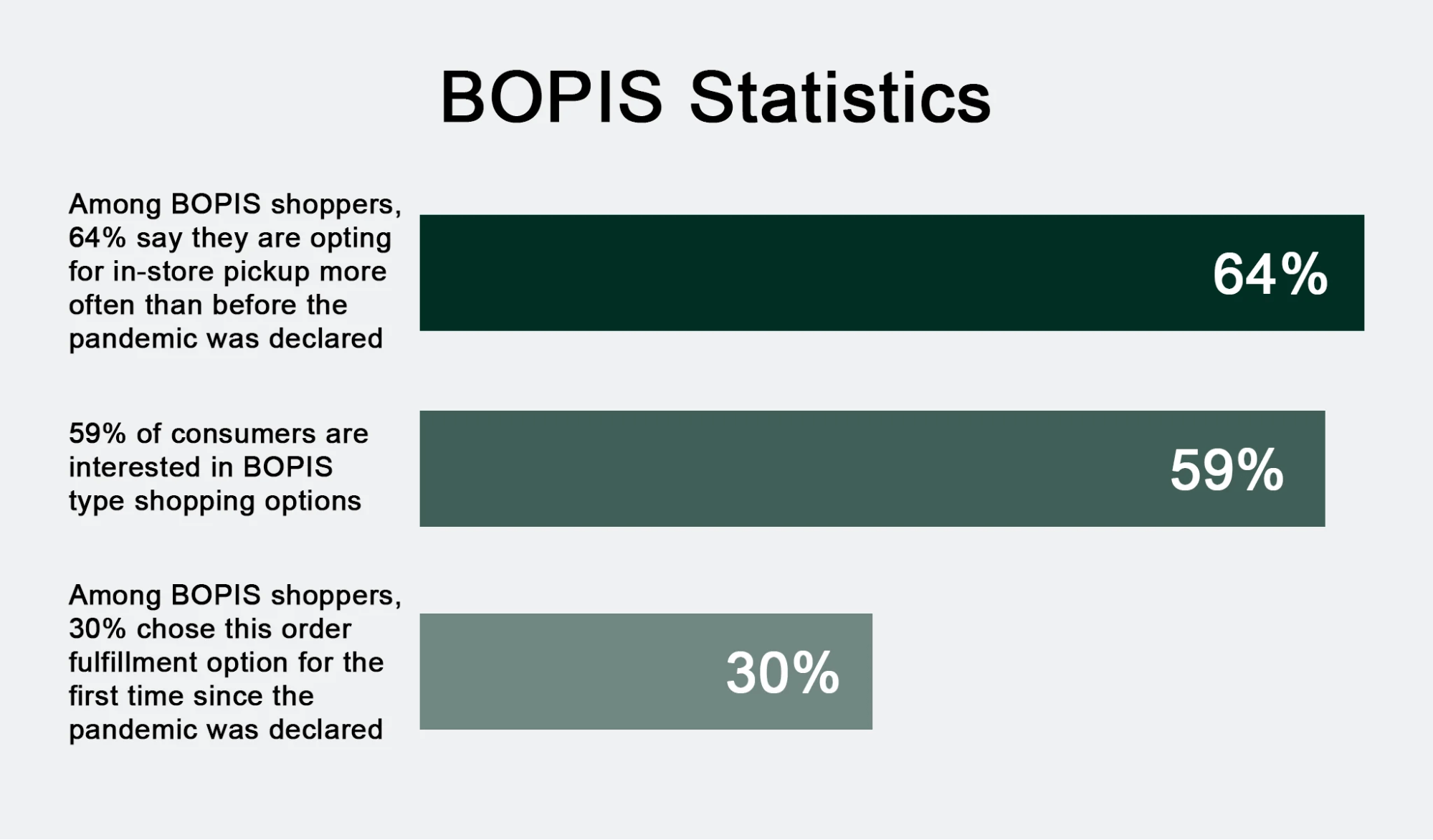
So popular is BOPIS that 53% of US retailers now offer it. 50% of online shoppers prefer to use BOPIS to collect their orders and 60% use it at least once a month. 47% of consumers often make additional purchases when they visit the store to pick up their orders.
Buy Online, Return in Store (BORIS)
As we noted above, returns account for 16.5% ($816 billion) in retail transactions. Typical return processes where the customer has to mail the item back, or the retailer needs to pick it up from their home is an expensive hassle for both. Brands that have multiple stores, warehouses or collection depots can use BORIS to minimize the effort and cost it takes to return an item.
Shoppers can buy online, and have their purchases delivered home. If a return is needed however, they can drop the product at a nearby store or drop-off location. The shoppers needn't pay for the return, while the retailer can restock returned items in the store, saving them shipping and management costs. Like in BOPIS, the increased store footfall usually means additional purchases and greater customer satisfaction as well. Stores can also offer in-store credit instead of cash refunds to maintain brand loyalty.
Ship from store
Ship from store enables customers to buy from a retailer's e-commerce portal, but the store fulfills the order rather than a warehouse. Since brick and mortar stores are usually in urban locations, items can be shipped much faster. They also need to invest only in last-mile delivery rather than complicated state-spanning supply chains.
Ship from store as a fulfillment strategy makes sense if your online catalog has the same items that your stores have. Additionally, it also requires a unified inventory management system so that in-store purchase activity is promptly reflected on your website and vice-versa. If implemented properly, smaller retailers can offer same-day or expedited delivery, which can rival the speed of bigger, more established brands at a fraction of the cost.
Curbside and locker pickup
Curbside works exactly as it sounds. A shopper buys your product(s) online and selects where they'd like to receive it. The retailer then coordinates with its logistics partner to deliver the item to the desired location. The omnichannel distribution strategy is called "curbside" because the order is fulfilled on a curb where the consumer and the delivery agent meet.
Deliveries can be made outside the storefront, their office, home or any place the customer finds convenient. Curbside delivery is great for people living in apartments, working professionals, or those who move a lot.
Locker pickup on the other hand, requires a retailer to have or rent lockers in urban areas. The order is deposited in the locker where the customer can collect at their leisure. Locker location and opening instructions are sent to the customer by email or text message. They usually contain a lock code, barcode, or an app that’s required to open the locker. Besides driving down delivery costs, both curbside and locker pickup increase package security.
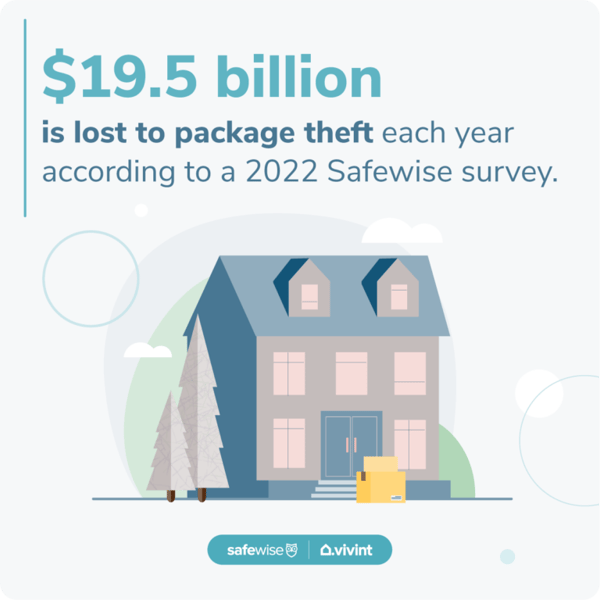
Porch piracy has become an epidemic today. 79% of US consumers were victims of package theft in 2021. As many as 260 million packages were stolen, costing retailers USD 19.5 million dollars. Unfortunately, security systems like CCTV or doorbell cameras don't deter theft. Curbside and locker pickup can combat this menace by making sure packages are received by their rightful owners only.
Three characteristics of a successful omnichannel strategy
It's a bygone conclusion that omnichannel distribution helps brands increase sales while maintaining customer loyalty. But, implementing it is easier said than done. In fact, while 90% retailers have an omnichannel strategy in place, only 8% feel they have mastered it. As we noted above, omnichannel strategies require incredible integration between all parts of your supply chain, which isn't easy to pull off. That said, there are some steps you can take to ensure your omnichannel journey is easy and successful.
Use a unified tech-stack
Technologies today can integrate disparate tech products with greater ease than those from a few years ago. Unified Inventory Management (UIM) systems can prove invaluable here. A UIM ties all parts of your supply chain and makes sure catalogs are consistent throughout all the customer facing applications and storefronts.
DeliverySolution’s Omnichannel Experience Management (OXM) solution makes distribution even simpler and more scalable for retailers. OXM is essentially an operating system that takes care of all customer-facing brand interactions. Our suite orchestrates and enables logistics, pick-up, returns, and post-purchase solutions. The end product is a highly personalized, customer-centric purchase and post-purchase experience that turns siloed distribution channels into one cohesive whole.
Partner with emerging third-party logistics networks and solutions
We firmly believe that retail brands should collaborate with third party logistics vendors for more efficient and creative fulfillment options whenever possible. The demand for faster and more nimble distribution requires investment in infrastructure that quickly begins to eat into a retailer's profit margins.
A report by McKinsey found that most retailers across the US can provide 2-day delivery to 80% of the US population with three warehouses. But, next-day delivery to the same number of people may require eight fulfillment centers, each of which can cost upwards of $100 million in capital.
Small and medium retailers can instead opt for emerging omnichannel distribution models like Delivery-as-a-Service (DaaS) to remain relevant and competitive. DaaS vendors harness their client base's combined demand to drive down distribution costs through volume pricing. For example, in 2021, Home Depot partnered with Walmart's GoLocal service to expand its next-day and same-day delivery services to over 90% of the US population.
Break down organizational silos, wherever possible
It's well established that de-siloing an organization is critically important for omnichannel distribution. Unfortunately, it's also one of the hardest things to do. Besides removing legacy technologies that are usually within their service life, dealing with silos also has a strong human component, too. No one likes change, after all. Departments and teams have tribal knowledge that's vital to their functioning. But, making this information available across the board is pivotal to implementing omnichannel distribution.
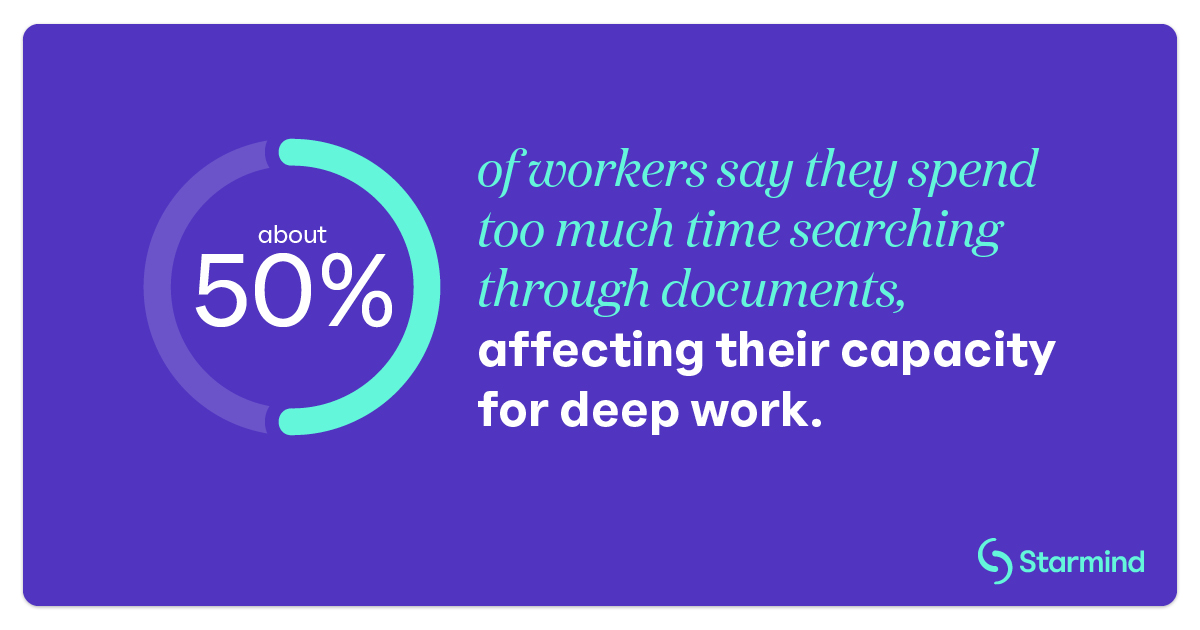
We recommend a staggered approach with transparency to ensure all stakeholders know why archaic structures need to be removed or upgraded. Chances are all parts of your company don’t need an overhaul immediately. You could probably start by introducing your departments to agile techniques that look past hierarchical barriers to create nimble teams that address immediate issues. By making everyone adopt a customer-first mindset, information can flow more readily between teams and departments. Tech upgrades can then be implemented to supplement your team’s efforts.
Omnichannel distribution is here to stay
Over the past few years, omnichannel has gone from being a desirable model to a survival necessity. Customers today not only prefer next- or even same-day delivery, they are increasingly expecting flexible delivery options that fit into their busy lifestyle—something that most retailers are under-equipped to address.
Fortunately, cloud-based technologies and effective omnichannel distribution are within the reach of almost all retailers, regardless of their business model. With platforms like these you needn't worry about sifting through your tech stack to see what works and what doesn't, or wondering how to integrate new technologies with legacy ones. It's all taken care of out of the box.
Ryan Caldarone
Ryan is a Sr. Digital Marketing Manager with over ten years of experience in B2B eCommerce, specializing in brand storytelling and content. Having contributed to hundreds of creative projects for SMBs and startups across the tech, energy, and fine arts sectors, Ryan brings diverse perspectives.
Topics from this blog: Solutions Efficiency
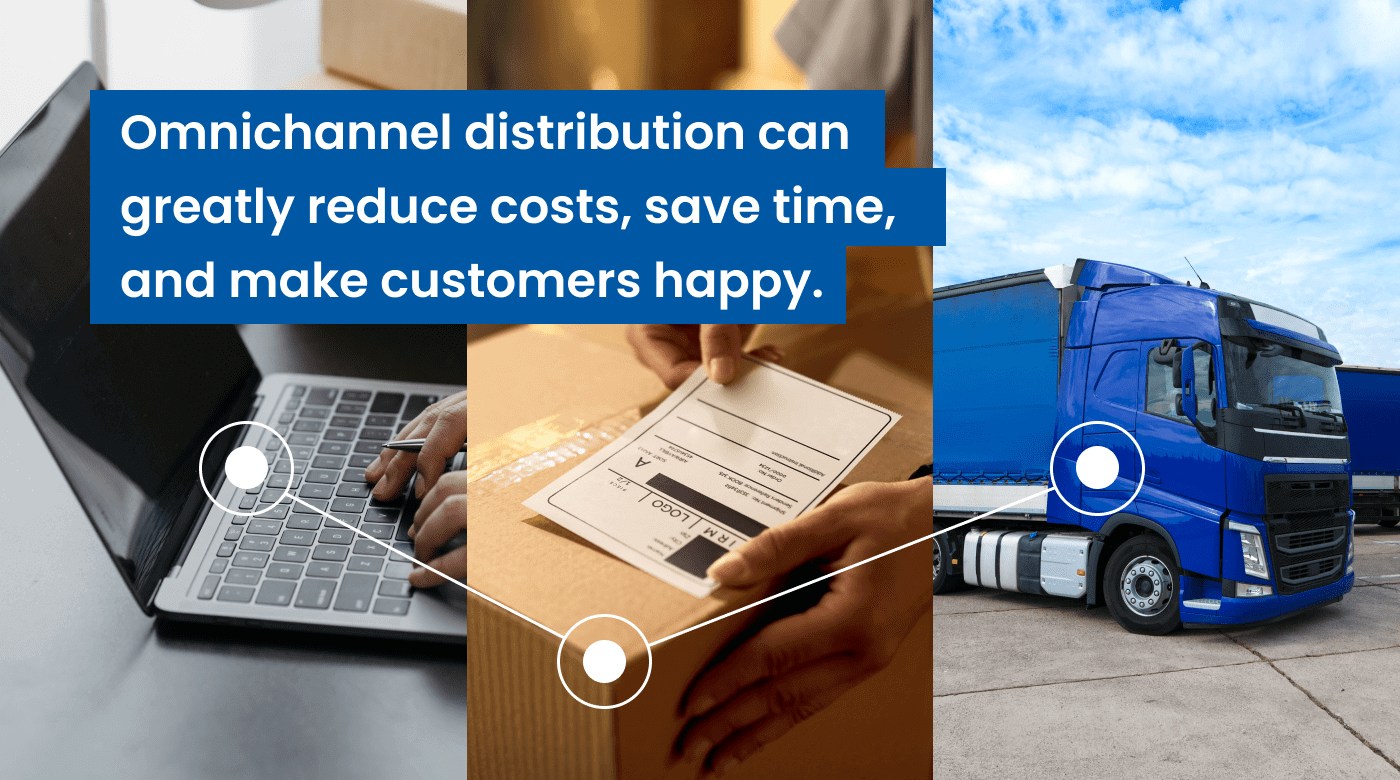
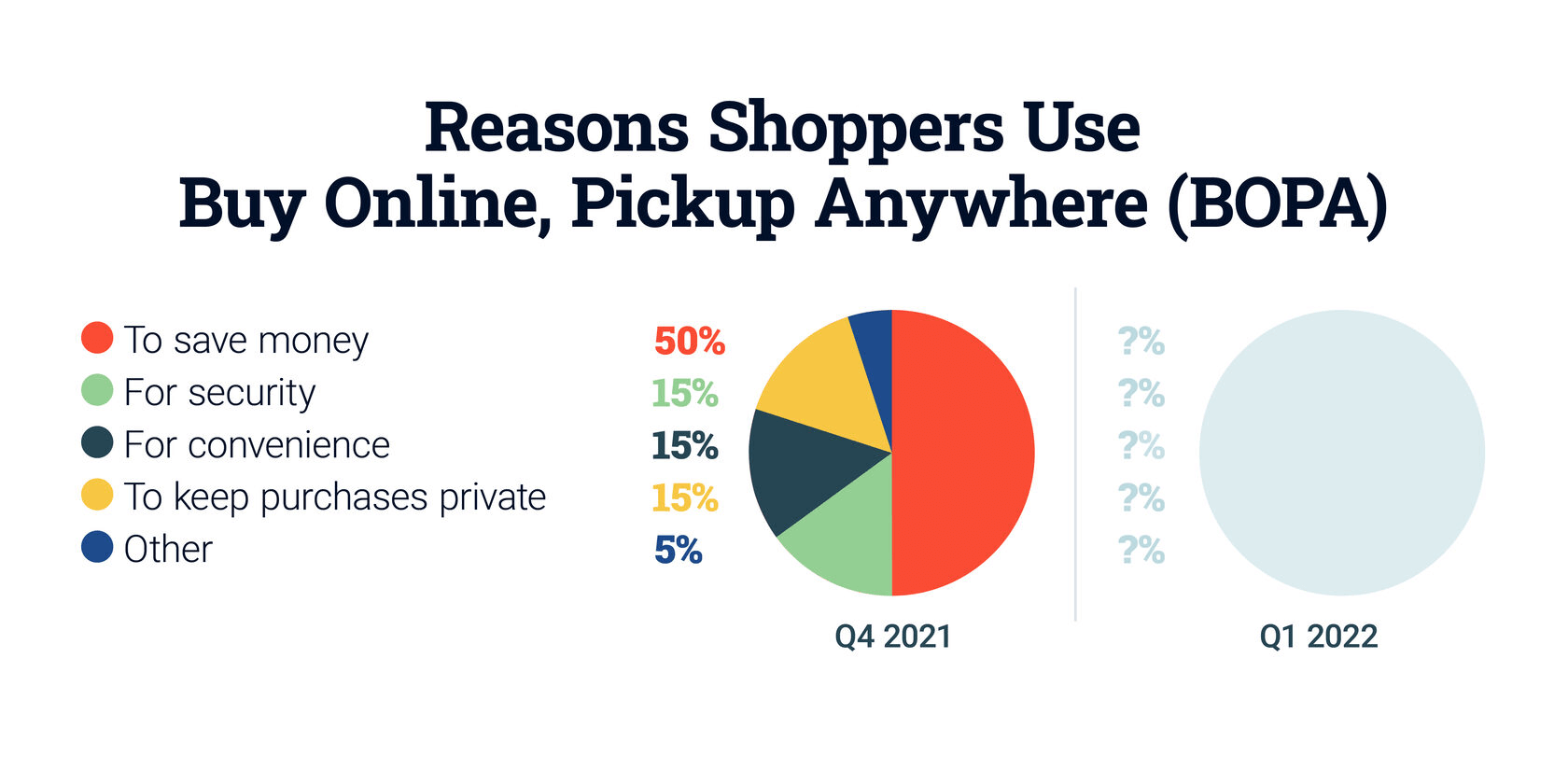 (
(